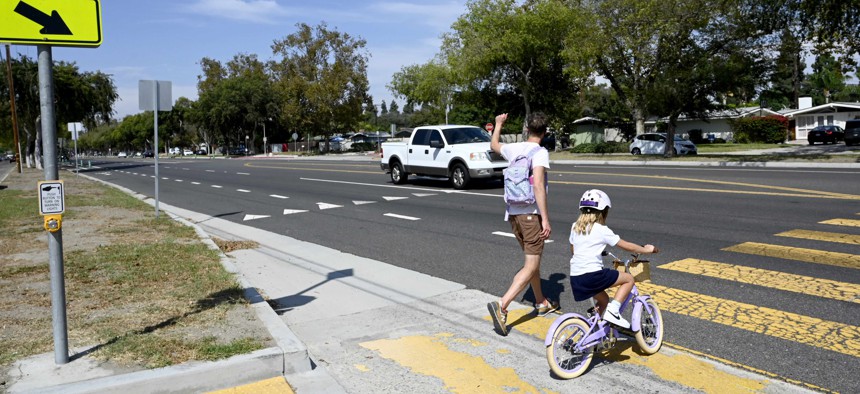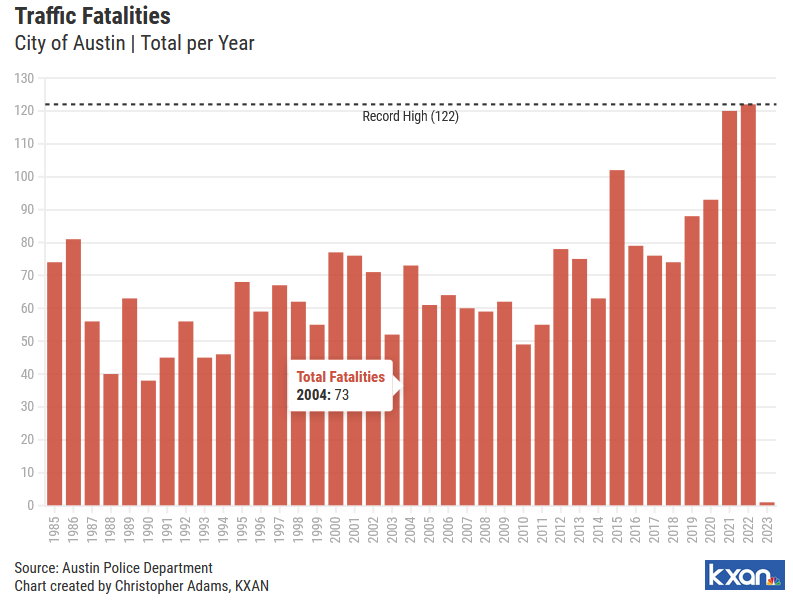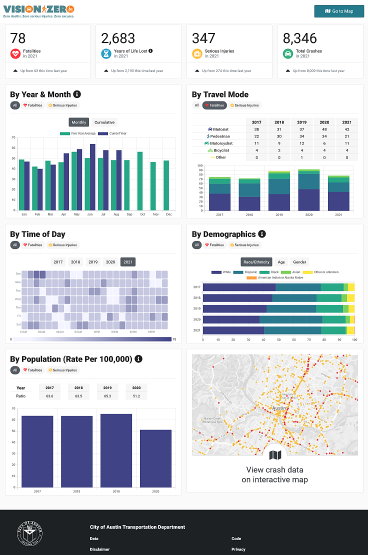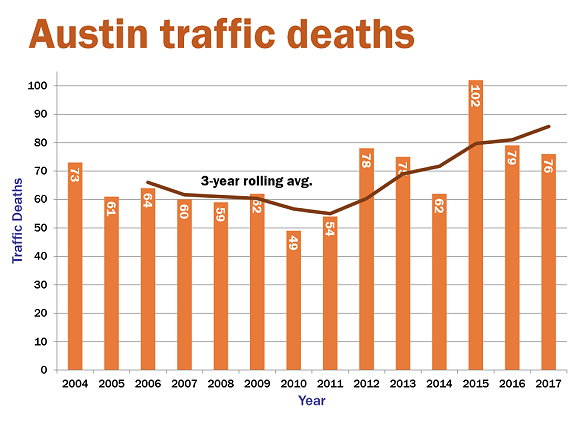 August 25, 2022 – ROUTE50 – The number of road deaths in the United States continues to climb, with the federal government reporting Wednesday that 9,560 people died in the first quarter of 2022. That’s a 7% increase from 2021, and the highest number in 20 years. “When everyday life came to a halt in March 2020, risky behaviors skyrocketed, and traffic fatalities spiked. We’d hoped these trends were limited to 2020. But sadly, they aren’t,” said Steven Cliff, the administrator of the National Highway Traffic Safety Administration, during a call with reporters. NHTSA estimated that 29 states and the District of Columbia saw increases in fatalities over 2021.
August 25, 2022 – ROUTE50 – The number of road deaths in the United States continues to climb, with the federal government reporting Wednesday that 9,560 people died in the first quarter of 2022. That’s a 7% increase from 2021, and the highest number in 20 years. “When everyday life came to a halt in March 2020, risky behaviors skyrocketed, and traffic fatalities spiked. We’d hoped these trends were limited to 2020. But sadly, they aren’t,” said Steven Cliff, the administrator of the National Highway Traffic Safety Administration, during a call with reporters. NHTSA estimated that 29 states and the District of Columbia saw increases in fatalities over 2021.
The agency projected that there would be stark differences among regions of the country in those results. The highest increases came in the mid-Atlantic region, which saw a 52% jump in deaths. The region includes Maryland, Delaware, Virginia, West Virginia, Kentucky, North Carolina and Washington, D.C. New England saw the second-highest increase, with a jump of 23%. The greater New York area had 18% more fatalities. On the other hand, the far western states of California, Arizona and Hawaii collectively saw an 11% decrease in road deaths. It was the only region that saw a downturn in projected fatalities, but much of the South and interior West saw relatively little change from the previous year.
The good news for southern states, though, is tempered by the fact that they had the highest fatality rates in the country in early 2021 and continued to do so (along with the mid-Atlantic) in early 2022. The data for individual states tends to be much more volatile, particularly for low-population states, because of small sample sizes. Delaware saw by far the biggest percentage increase of any state, as the number of people killed there more than doubled. The 50 people who died in early 2022 was 163% more than the 19 who died in early 2021. Connecticut, Virginia, Vermont and the District of Columbia saw the next-highest increases, in terms of percentages. North Carolina, on the other hand, saw the biggest increase in the number of people killed. This year, 171 more people died in the first quarter in the state than last year. The next-highest increases were for Virginia (122), New York (64), Texas (57), Illinois (55) and Maryland (54).
Traffic deaths have been climbing for nearly a decade, but the increase has been particularly stark since the pandemic started. An estimated 42,000 people died on U.S. roads in 2021, or more than 10,000 more people a year than a decade ago.
Deaths Up, But No New Approaches
Safety advocates are growing increasingly frustrated that the issue has not sparked more concern – or at least a new approach – among policymakers at the federal, state and local levels.
At the federal level, NHTSA regulates the safety of vehicles, but it has been the subject of frequent criticism for a variety of issues. Advocates have complained that NHTSA has:
- Not clamped down on automakers that produce increasingly large vehicles with bigger blind spots for drivers.
- Not reined in Tesla for promoting “self-driving” features that cause crashes and unsafe driving.
- Allowed automakers to include interactive elements that could distract drivers.
- Not tested vehicles for their impact on pedestrians, cyclists or other vehicles in crashes.
Part of the problem has been the lack of a permanent leader. The agency went five years without a permanent head, and Cliff only received U.S. Senate confirmation in May. But last week, he announced he would be leaving the post next month to head the California Air Resources Board, a pollution control agency where he worked previously. “Today’s awful news underscores the urgency of implementing [the Transportation Department’s National Roadway Safety Strategy] and the need for strong and consistent leadership at NHTSA,” wrote the Governors Highway Safety Association in a statement.
The GHSA and other safety groups have encouraged President Biden to nominate a replacement for Cliff who “has roadway and vehicle safety expertise and is focused on pursuing and implementing countermeasures that will work to address the current crisis.” That would be in contrast to Cliff, who came from an environmental background. One of NHTSA’s other functions is to regulate fuel efficiency of new vehicles, which the Biden and Obama administrations used to further their goals of reducing carbon dioxide emissions. Meanwhile, safety advocates continue to fight over the best way to reduce traffic deaths. Established players like GHSA and Mothers Against Drunk Driving have emphasized the need for better enforcement of traffic laws.
In fact, Cliff’s remarks about the new road fatality statistics came at the beginning of an event promoting a “Drive Sober or Get Pulled Over” campaign for the upcoming Labor Day weekend, a recurring effort promoted by NHTSA. Nearly a third of road deaths involve someone who is intoxicated, Cliff pointed out. But other groups have become frustrated with that approach, arguing that the impetus should be on government – rather than individuals – to address dangers on the road. They’ve called for things such as speed regulators on vehicles, regulations to limit the size and weight of new vehicles, and street designs that encourage slow driving and protecting people outside of vehicles.
“We call these ‘traffic accidents’ as though each was an unrelated snowflake, but really these are near-identical profit-driven corporate killings enabled by government dereliction of duty,” wrote Jessie Singer, author of the book “There Are No Accidents,” on Twitter Wednesday. The Biden administration has largely tried to avoid picking sides in the argument, by calling for improvements across the transportation sector. In January, Transportation Secretary Pete Buttigieg unveiled the Biden administration’s approach for tackling road safety. The plan stressed the need for “safer people, safer roads, safer vehicles, safer speeds and better post-crash care.”
“We are going to team up with governors, mayors and county executives who are the ones who actually design and maintain so much of American road systems. Our strategy gives government at every level a shared roadmap, and we’re counting on their help, just as they can count on ours,” Buttigieg said when unveiling the strategy.
Daniel C. Vock is a senior reporter for Route Fifty based in Washington, D.C.




